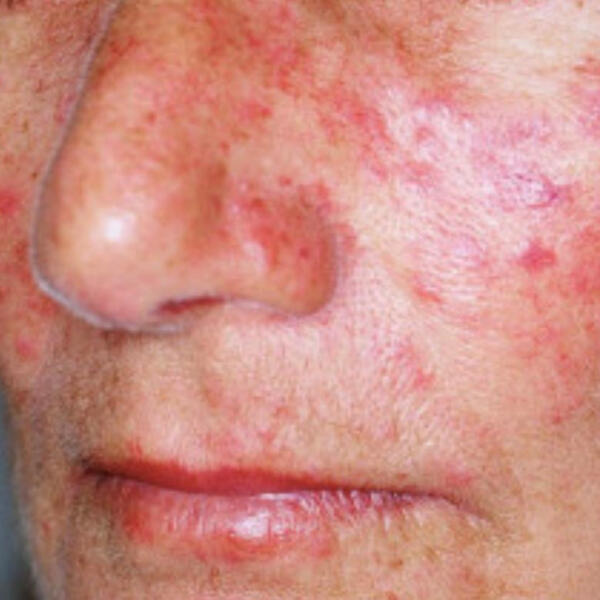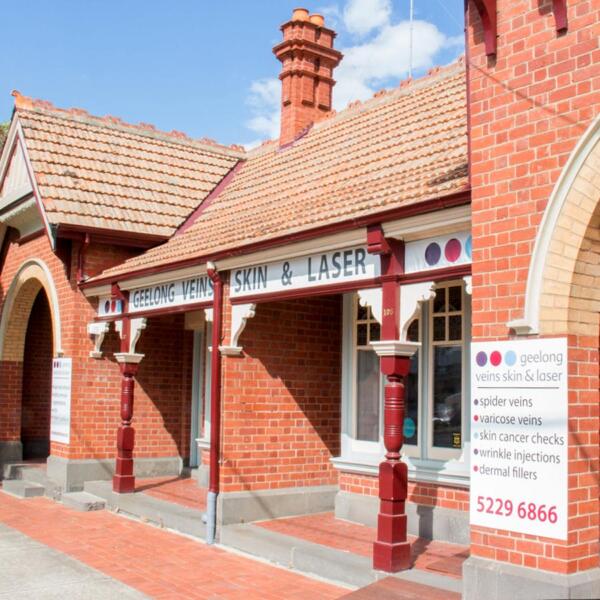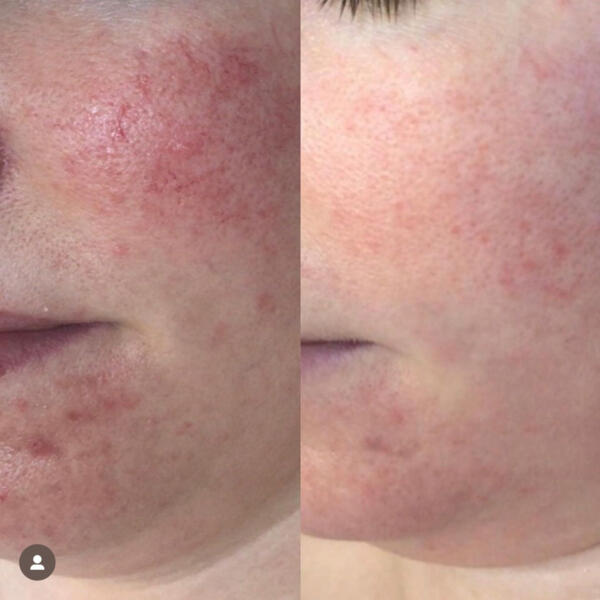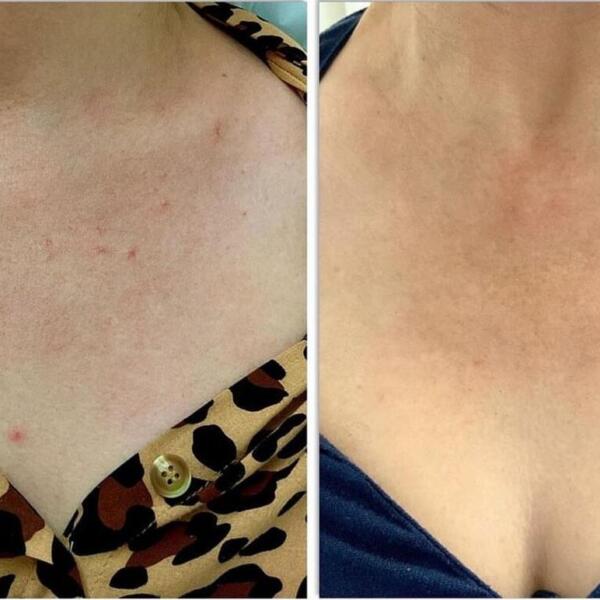Treatment of vascular skin conditions
Vein & vascular issues
Red spots and rashes
We have both vascular lasers and BBL (Broad Band Light) treatments that we use to treat red skin conditions at GVSL. These lasers / lights have wavelengths that are attracted to red, blue or purple blood inside the vessels / skin spot, selectively fading the target lesion.

Causes
Broken capillaries – caused by age, genetics, smoking, sun damage, rosacea.
Rosacea – the cause is not known exactly, but theories are that it may be genetic, autoimmune, inflammatory, a reaction to dermodex mites and/or stress related.
Facial redness/flushing – caused by genetics, sun damage, alcohol sensitivity.
Angiomas/ cherry angiomas/ campbell de morgan spots – genetic cause, appear more with age.
Venous Lakes – Genetics, localised trauma.
Symptoms / description
Broken capillaries – small visible blood vessels around the nose, cheeks, chin. Can be red, purple or blue.
Rosacea – Redness and blotchiness of the cheeks/nose, plus or minus papules and pustules. Occurs chronically over weeks or months but may have periods of quiessence.
Facial redness/flushing – generalised pink/red discolouration of the face without distinct lesions. Will be worse with heat, exercise, alcohol, smoking, certain medications.
Angiomas/ cherry angiomas/ campbell de morgan spots – 1-5mm round elevated red/purple lumps with a shiny, smooth surface. Occur most frequently on torso or face.
Venous Lakes – Blue/purple compressible, soft, round, small lumps that appear on the lips or ears.
Treatments
At GVSL we treat all these described vascular lesions with lasers or BBL treatment. You may see a doctor or a dermal clinician for your treatment or sometimes both.
Vascular laser can feel like a sharp flicking or heat sensation on the skin. We can use numbing creams or cooling plates to assist with comfort.
Yes, our doctors treat small spider angiomas and small birthmarks on children.
Vascular lesions will need between 1 and 4 sessions depending on the number / extent.
Usually the particular capillary / spot will not return but if you are prone to getting that type of lesion more may appear elsewhere.
We have multiple different treatments for rosacea and will match the treatment/s to your skin’s needs. These include
- BBL and laser light
- Skincare products that reduce redness and acne/pustules
- Script oral and topical medications
Yes if the vascular lesion is on the face or neck, visible at 3 meters and treated by a doctor.

The GVSL difference
At Geelong Veins Skin & Laser we provide complete care of you as a patient and your medical concern. You may see one, or several of our team in any consultation. We work together with expertise in general practice, radiology, vein specialties, dermal therapy, skin cancer medicine, vein / skin and cosmetic nursing to provide you with a treatment plan that will lead to safe and effective results.
All before and after photos are displayed with specific patient consent. Results may vary, discuss your individual needs with your health practitioner.











